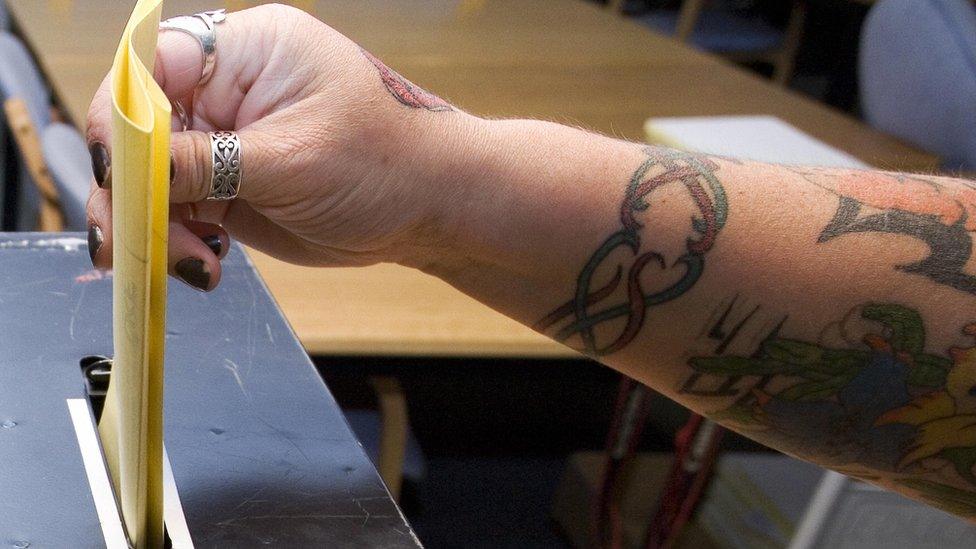General election 2017: Who is the most searched-for party leader?
- Published
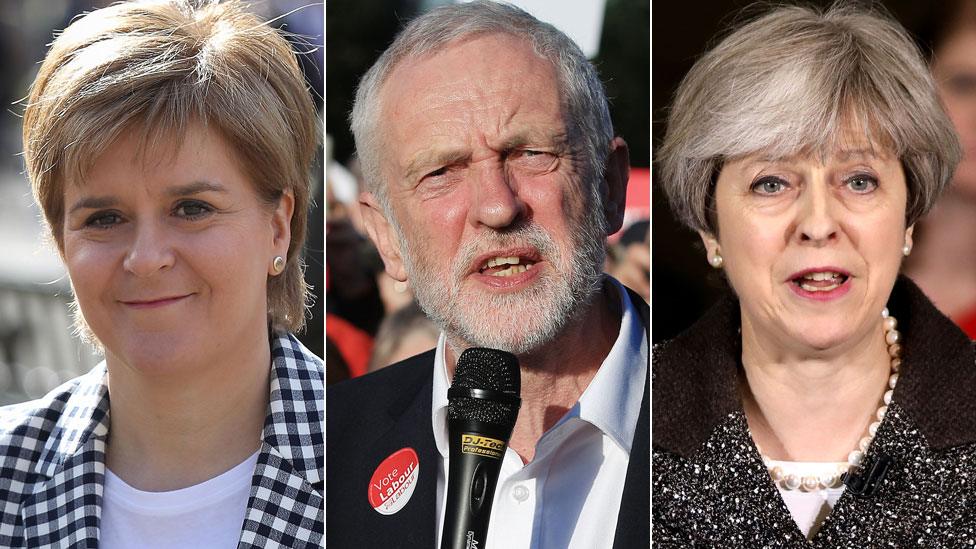
Nicola Sturgeon, Jeremy Corbyn, Theresa May - but who came top?
Internet searches are the main source of information for many voters at a general election.
So what happens if you redraw the political map of the UK based around Google searches for the names of party leaders over the six months before the election was called?
At first glance, it looks a lot like the actual political map, with the SNP dominant in Scotland and Conservative blue covering large swathes of England.
But there are some interesting differences.
Conservative leader Theresa May topped the search rankings in 444 constituencies, with Labour leader Jeremy Corbyn coming top in 97 constituencies.
However, this is not an indication of support for Theresa May or Jeremy Corbyn - we don't know the reason why people are searching for their names or whether they view the leaders positively or negatively.
The prime minister tends to get more media coverage in a non-election period, so this may account for the greater levels of interest. She was the most searched-for party leader in most of Labour-held inner London, while Mr Corbyn topped the rankings in quite a few Conservative strongholds in the south of England.
Sorry, your browser cannot display this map
SNP leader Nicola Sturgeon came top in 75 constituencies - many of them in England, from Labour-held Workington, in Cumbria, to Conservative strongholds like Folkestone and Hythe and Dorset South, on the south coast.
Paul Nuttall - who replaced Nigel Farage as UKIP leader in October last year - topped the rankings in 17 constituencies, generating interest in Wales and Northern England in particular.
Lib Dem leader Tim Farron came top in eight constituencies - a fairly random selection geographically, none of which are currently held by the party or on their likely target list.
Green Party co-leader Caroline Lucas topped the rankings in just one constituency - Newbury, in Berkshire, where her party is involved in anti-fracking campaigns. Voters in her own Brighton Pavilion seat searched for Theresa May the most, according to the data.
In Northern Ireland searches were analysed for the DUP, Sinn Fein, SDLP and the UUP, of them DUP leader Arlene Foster had the most interest in eight seats.
Google Trends collected search results for 1,876 cities, and then allocated those locations to the relevant constituencies.
The internet company collected search results for six months, ending 17 April 2017. Data was analysed by Alasdair Rae of Sheffield University. Map built with Carto.
- Published10 May 2017
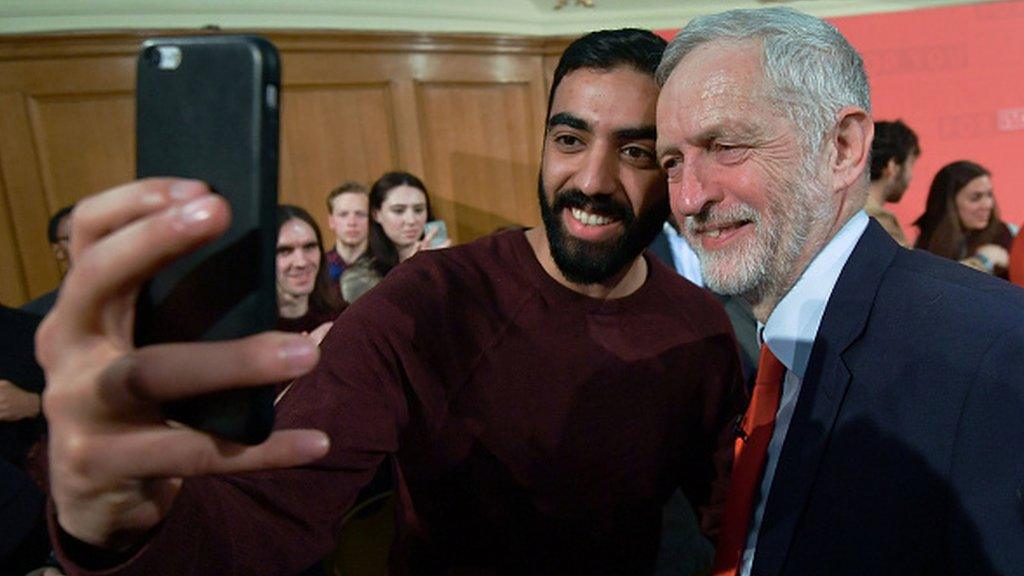
- Published9 May 2017
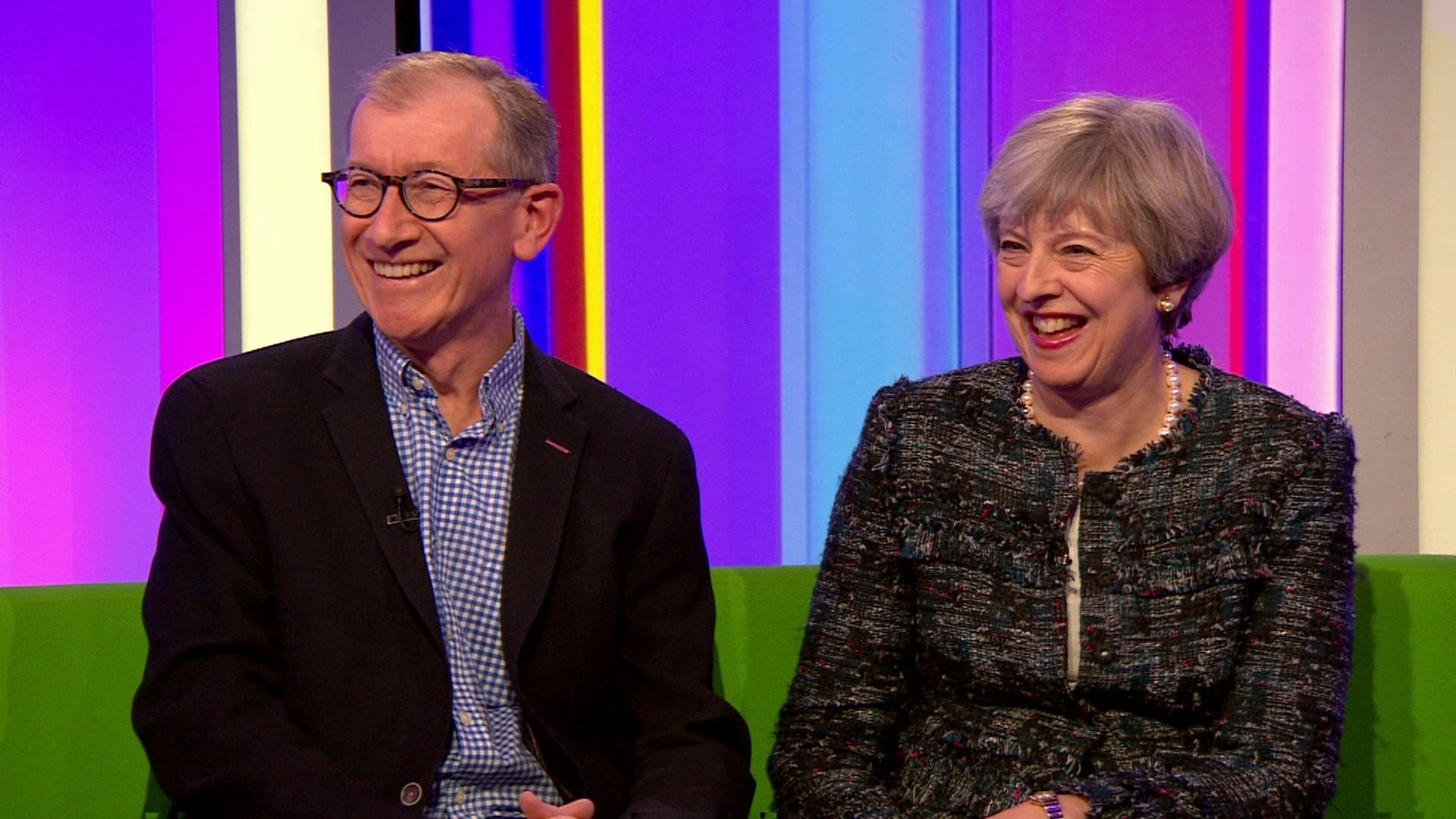
- Published9 May 2017
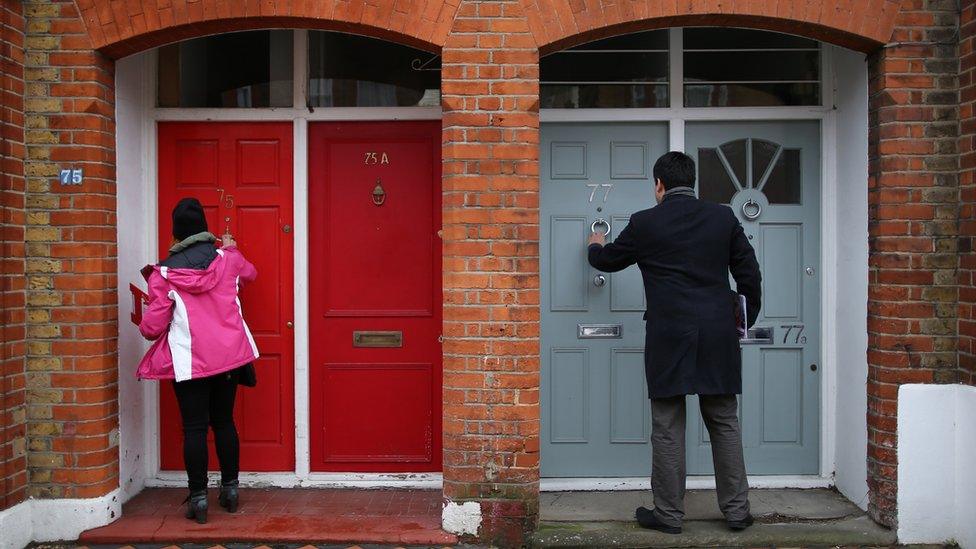
- Published2 June 2017
